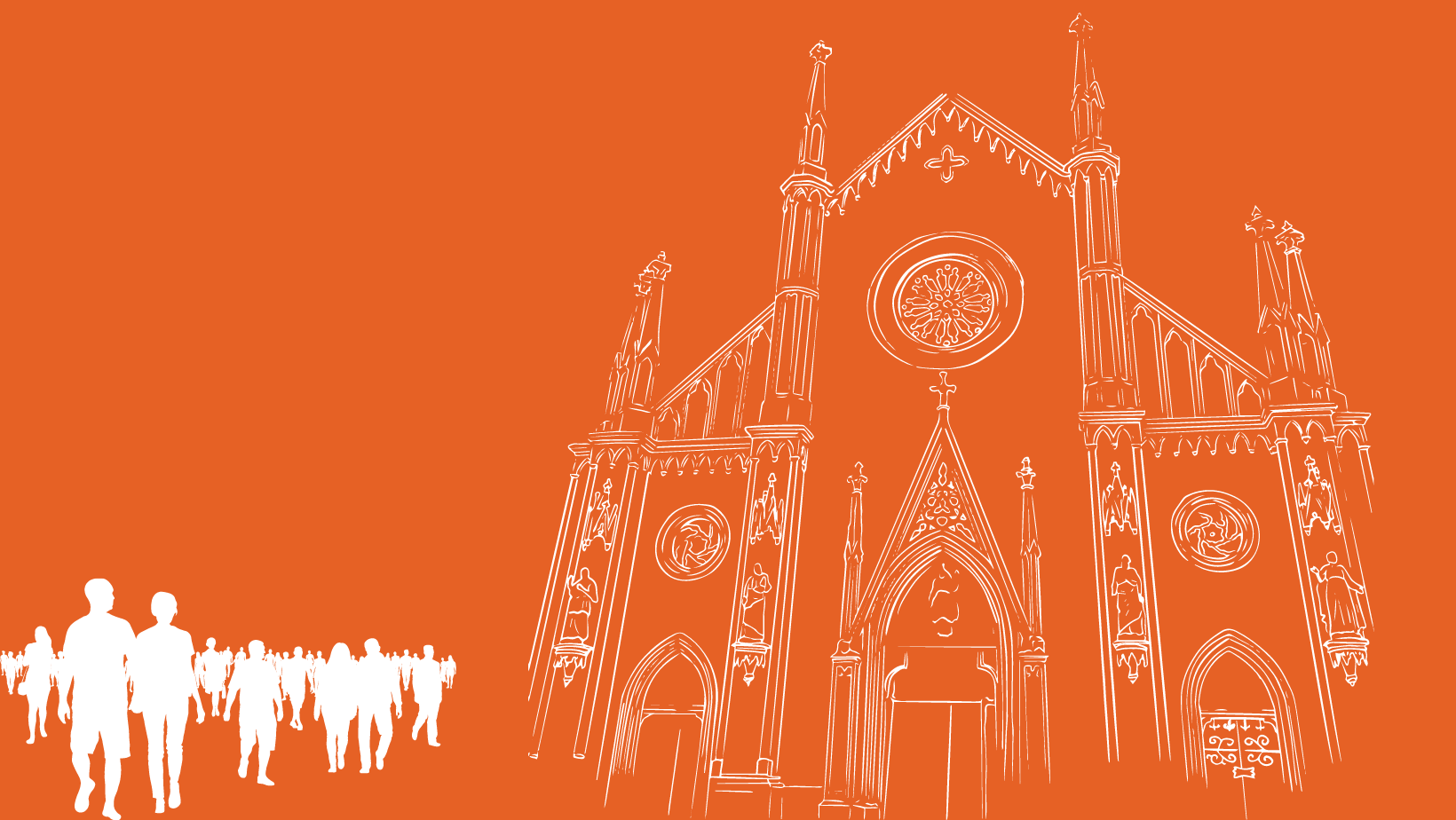
Photo by Jamie Street for Unsplash
“Jesus Revolution,” a movie released in February, shows unexpected groups of people working together and spreading the love of God. The movie is based on a true story — originally told by Greg Laurie, a leader of the revival movement, in his book “Jesus Revolution.”
The movie is a must-see and should be an eye-opener for Christians everywhere. The story sets an example of how the Church should come together to help others find faith while accepting and celebrating differences in the unique make-up of the body of Christ.
As the Jesus Movement of the 1960s took shape, a spark ignited across California, creating a new-found eagerness to spread the word of God. Even though the film is set in a different time, it still asks questions that are relevant to today’s society.
What is the truth about God? What is a church supposed to look like? How can God’s people unify?
The ‘60s had its own set of political issues that divided the country. Civil unrest, wars and illegal drug use polluted the world.
People were also searching for God. At the beginning of the movie, a headline on a Time magazine cover asks, “Is God Dead?” This moment captures the state of the world at the time. A generational need for change was on the horizon in California — starting with Chuck Smith (Kelsey Grammer), a small-town church pastor in Southern California.
Chuck pastored a little church named Calvary Chapel, located in Costa Mesa, California. At the start of the Jesus revolution, the church only had 25 members. In 1965, that began to change.
At first, people like pastor Chuck were not too open to letting hippies into the church. It was not the religion itself people seemed to have an issue with, it was the people within the religion.
Some church members looked down on them and did not welcome them, due to their opposing lifestyles. Hippies dressed differently, which some considered scandalous, and were known to do drugs, according to Vintage Dancer.
But, “Jesus Revolution” is about bringing in the outcasts and inviting them into the Lord’s community — an example for Christians today.

Photo by Cindy Chen for Unsplash (Not a picture of the actual tent meeting)
Along with pastor Chuck, Lonnie Frisbee (Jonathan Roumie) helped start what became known as the Jesus Revolution. The movie shows Janette (Ally Loannides), Chuck’s daughter, picking up Lonnie on the side of the road and inviting him into their home. In actuality, Lonnie was a hippie who befriended Janette’s boyfriend, according to Calvary Chapel Magazine.
Later, Greg Laurie (Joel Courtney) joins the movement. At the start of the story, Greg is lost and in need of answers to life’s greatest question — what is the Truth?
Greg then meets Chuck and Lonnie when he attends a service at Calvary Chapel. The Holy Spirit filled the room as everyone sang in unison. Greg was unaware of the “spiritual awakening” about to happen in the years that followed, according to an account by him on Harvest’s website.
At the beginning of the movement, Chuck faced criticism from the Calvary Chapel church members. The backlash included the departure of some of the members, according to History vs Hollywood.
Today’s church should be encouraged by Chuck’s story to invite more people. Everyone is looking to be accepted. When church members of Calvary Chapel left because of the hippies, that was the opposite of what the Bible says. In Romans 15:7, Jesus tells us to accept each other just as He has accepted us.
“Therefore, accept each other just as Christ has accepted you so that God will be given the glory.”
As Chuck accepted more people into the congregation, more people accepted Christ. This criticism did not stop the church from growing.
As the church opened its doors wider to the hippie culture with Bible studies and services on Sundays, they began to outgrow the small building. Eventually, Calvary Chapel moved their services to a large tent outdoors.
People from all different cultures were led to Christ. Jesus was doing wonderful and powerful things within the body of Christ in Southern California.
Chuck and Lonnie brought their ministry to Pirate’s Cove and started baptisms. The number of baptisms grew daily, from 100 — to over 1,000.
In the movie, the scene is shot in the same location that Chuck and Lonnie used for baptisms. The emotional scene when Greg gets baptized was actually written by Greg Laurie himself, according to interviews for behind-the-scenes footage.
Since Greg has now been a pastor for over 40 years, he brings out a level of spirituality and authenticity in the actors’ lines during the baptism scene. With the help of Greg and his wife, Cathe, the film directors were able to showcase what the movement was really about.
“This is a significant story that in many ways changed the world,” Greg Laurie said in an interview for behind-the-scenes footage.
The film showed how Chuck and other church members invited people outside of traditional church culture into Calvary Chapel. Instead of judging their lifestyle, they welcomed hippies with love.
Past Calvary Chapel church members recount moments not featured in the film. Sandy Chappell recalls a time in the church when she felt welcomed even as an outsider, in an article titled “They Called It the Jesus Movement” by Calvary Chapel Magazine.
Chappell, who once regularly attended the tent meetings with her friends and wore attire that was often deemed inappropriate for church, was given kind instruction rather than judgment.
“Yet instead of harsh rebuke, they received gentle, loving instruction,” Calvary Chapel Magazine wrote. “Sharon Fischer, an original Calvary Chapel attendee, remembered:
“Kay asked me to organize a fashion show. She said, ‘Let’s make this a grand event and show these young ladies how to dress modestly.’
“Rather than a list of clothing to avoid, the demonstration presented the hippies a positive model to aspire to.”

Photo by Stephen Arnold. Uploaded on Unsplash.
By inviting those who needed God the most, Chuck, Lonnie and Greg started a revolution that saved those who were lost.
With Chuck’s verse-by-verse teachings, more people within the hippie culture started to find God.
At the end of this film, people are left with a sense of hope. It highlights an urgency for Jesus with a deep story that Christians can relate to.
During a behind-the-scenes interview, Kelsey Grammer, who played Chuck Smith, said, “I wanted to do something that meant something. Something of value and then this script was delivered to me the next day.”
This film demonstrates a way the Church can reach others, and “Jesus Revolution” is a story of how cultures can come together in unity to find God.
Hope for unity in the body of Christ can be found in revival. Asbury University, in Wilmore, Kentucky, held an 11-day revival in February, around the time “Jesus Revolution” was released in theaters.
Students spread the revival across other campuses, such as Lee University, inspired by the movement at Asbury University.
These revivals are just the beginning of a new generation’s Jesus Revolution, one that can carry on this film’s message to not judge outside appearances or lifestyles. Instead, we can remember Christ died for everyone and welcome anyone who enters the Lord’s community.















